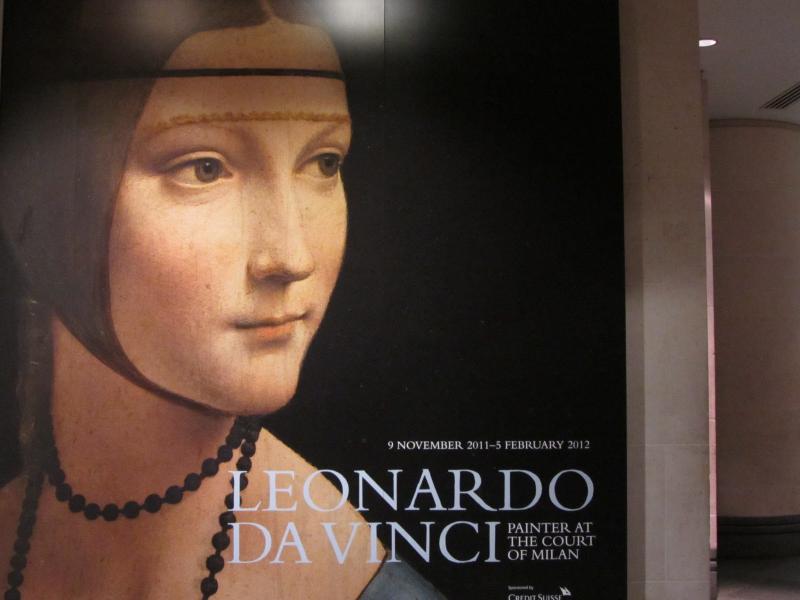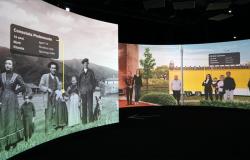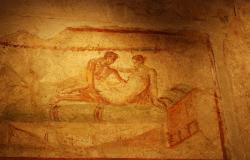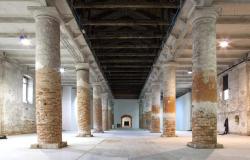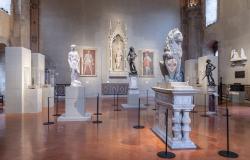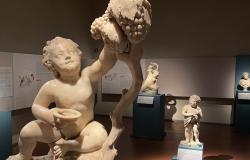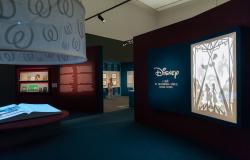Last week I visited The Leonardo Da Vinci Exhibition at the National Gallery, in London. A true once-in-a-lifetime experience!
The exhibition displays Da Vinci’s paintings from his time in Milan under the patronage of Ludovico Sforza, from around 1482-1519. Early accounts said that Leonardo was hired in Milan as a musician when he was 30. But it seems that he was rather hired as an engineer to sort out Milan’s many canals. As a matter of fact, Leonardo invented the lock that is still used on canals today.
Access
Although it was immediately fully booked, the museum releases an extra 500 tickets every day. When I went, the public was queuing right out of the door, but there’s always something going on in Trafalgar Square to watch and the queue moved quickly. Groups were allowed in every 15 minutes to avoid severe crowding. We weren’t allowed to take any photos, although sketching and drawing was allowed.
A unique style
Portraits traditionally showed the sitter in strict profile. But after 1486, Leonardo started to paint people staring forwards, which brought them to life, and his pupils began to copy him. Some of his pupils’ paintings were displayed in the exhibition. It was immediately obvious at first glance that Leonardo hadn’t painted them. Why? Because Leonardo’s style was so unique that nobody else could emulate it.
This is the first, and very probably, the last time that all these paintings and drawings are displayed together. They’re far too fragile and valuable to be moved again. The organisation and insurance must have been a nightmare!
The Queen of England owns a lot of the drawings and loaned them to the exhibition. Although there was an official in every room, it was incredible to find myself inches away from these wonderful masterpieces.
Visiting the exhibition
Before going into the exhibition, I hired an audio guide, which was well worth having, once I got the hang of it! I’m not very technical-minded. In the first room, I was a bit worried as it seemed to be full of very tall men, and I’m only 5ft tall! But it soon cleared.
 My favourite painting was in Room 2. It’s The Lady with an Ermine; a portrait of Ludovico Sforza’s teenage mistress, Cecilia Gallerani. The ermine was a symbol of purity and moderation. Ludovico Sforza had also been awarded the Order of the Ermine. Most people in Leonardo’s time could look at the symbolism in churches and paintings, and immediately understand what each element represented. How I wished I could gaze at Leonardo’s work and understand what he was saying to his public!
My favourite painting was in Room 2. It’s The Lady with an Ermine; a portrait of Ludovico Sforza’s teenage mistress, Cecilia Gallerani. The ermine was a symbol of purity and moderation. Ludovico Sforza had also been awarded the Order of the Ermine. Most people in Leonardo’s time could look at the symbolism in churches and paintings, and immediately understand what each element represented. How I wished I could gaze at Leonardo’s work and understand what he was saying to his public!
I think that Leonardo’s painting of Cecilia completely knocks the spots off the Mona Lisa. It’s the most moving painting that I’ve ever seen. It speaks! Cecilia, with the strange-faced ermine gently cradled in her arms like a child, is looking beyond the artist, possibly at her lover. Her eyes shine as though she is about to burst out into teenage giggles. Faces and fashions change through the years, but she’s still a beauty. And despite being the mistress of the most powerful man in Milan, she looks so innocent. I suppose she was at that young age.
The scene is brightly lit from the right. Leonardo was an expert at painting the light. I turned away to move on. Then I reversed back again for another look. I didn’t want to leave it. I will never see it again, I am sure. I felt near to tears. Does that sound stupid? Property of the Princes Czartoryski foundation, the portrait is displayed by the Czartoryski Museum, Kraków, Poland and is cited in the museum's guide as the first truly modern portrait.
During his Milan period, Leonardo became interested in anatomy. He probably watched dissections of criminals’ corpses. The bodies he drew and painted became more muscular. Room 3 contained some of Leonardo’s sketches of body parts, like arms, necks, shoulders, etc. and male nudes. He made notes in tiny mirror writing; all back to front. Nobody knows why. It just shows yet another of his talents and his eccentricity.
In Room 4, for the first time ever, both paintings of The Virgin of the Rocks were brought together, on opposite sides of the room. Again, they are screaming symbolism. I can understand why stories about secret clues to hidden Knights Templar treasure have been written. There is something very surreal about the whole composition.

The figures are grouped in a pyramid formation. In the first one, they are all pointing or making hand gestures. The strange background is full of womb and phallic symbols. The plants were carefully chosen, and they all have meanings.
In the later painting, they aren’t pointing. They have downcast eyes and haloes. Both paintings became clearer and revealed more when I stepped back and looked from a distance.
In Room 6, there was the recently-discovered Da Vinci painting, Christ as Salvator Mundi! By sheer coincidence I had recently read about it in the paper. But I would have never dreamed of standing right before it!
Oh, oh, oh, and oh! His face, the detail of his clothes, the raised fingers, and the glass orb, representing the world. He smiles serenely and his eyes follow you if you move from side to side in the room. While the Lady with an Ermine and other paintings were commissioned, this painting was probably created for the maestro’s own satisfaction.
Nowadays, people can go to classes and learn about perspective, light and shade, etc. But being able to produce awe-inspiring masterpieces like this, just comes from within. The painting is still part of a private collection. If I owned it, I would stare at it every day. I hope it is appreciated and not shut away in a dark safe!
Finally, in Room 7, there were several of Leonardo’s sketches. Some of them were drawn from real life. Leonardo was fascinated by ugliness as well as beauty. He must have sketched quickly to capture their expressions before they were aware of being drawn. It wasn’t so much what he drew as what he left out. With just a few deft strokes he brought to life the grotesque characters of the street. I was looking at every detail, every single stroke, enjoying the ugly turned into beauty by Leonardo capable hands....and, suddenly, there they were; two versions of The Last Supper. A stirring culmination to a memorable day.
And of course, more symbolism there. The disciples’ facial expressions are wonderful, all completely different from one another. And on a Da Vinci code note, my opinion? John is definitely a woman. The feminine face, the clothes, even the feet under the table which are smaller than the others, and daintily resting on a strut. Could it be Mary Magdalene as many people believe? I don’t know. I only know what I saw there on the wall. A woman amongst the disciples.

What did I think of the Leonardo Da Vinci exhibition? I’ve seen pictures of his work in newspapers and magazines. Of course I have. But none of them really capture his genius as staring at the originals does. A picture of a painting just is not the painting. Together with the Tutankhamun Room in the Cairo Museum, it is definitely the most wonderful exhibition I have ever seen. Absolutely mind-blowing.
The Leonardo Da Vinci Exhibition is held at the National Gallery, in Trafalgar Square, London, until the 5th of February 2012.
